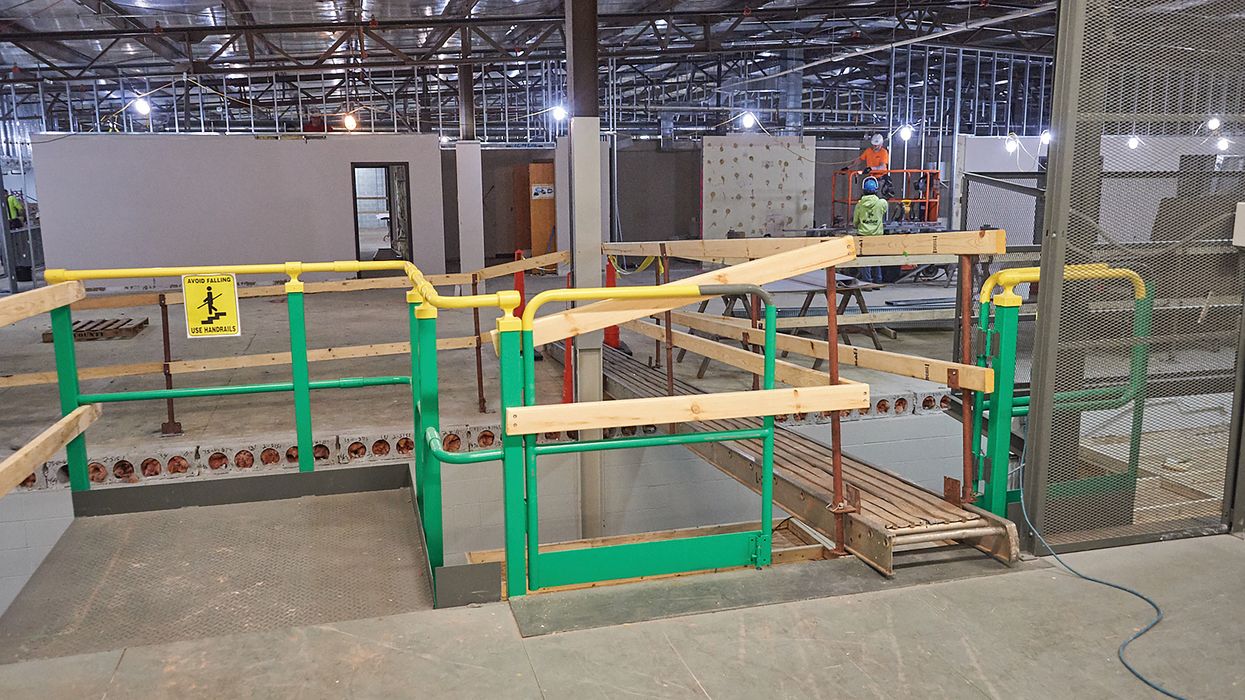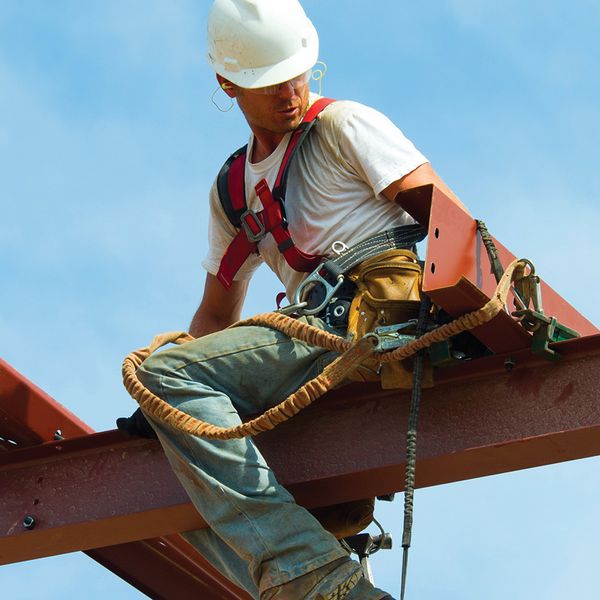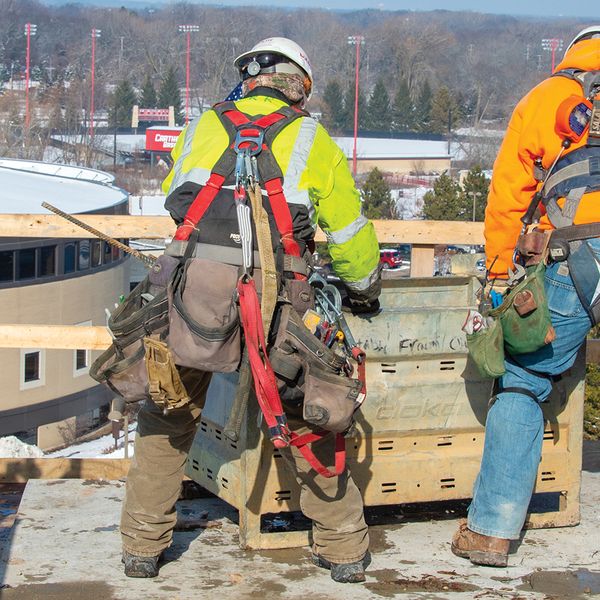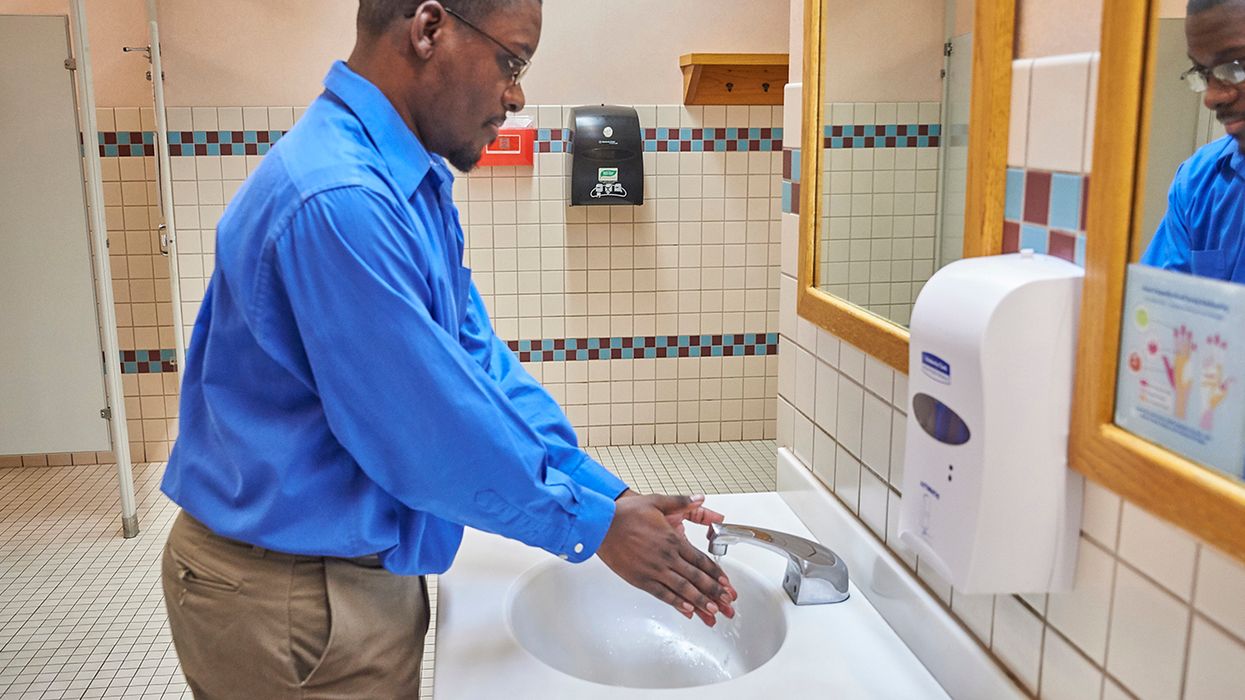Require fall protection
Requiring workers to use the right tools for the job is a critical element of safety. One of these tools is the use of fall protection systems when working on elevated surfaces.
Fall protection systems serve one of two basic functions:
- They prevent or restrain a worker from falling, or
- They safely stop or arrest a worker who falls.
Guardrails are a primary fall protection system because they prevent workers from falling to lower levels. Also, toeboards are often included to avoid the fall of materials to a lower level and keep a worker’s feet from slipping over an edge.
However, OSHA has determined that other systems can be used when guardrails aren’t feasible, such as:
- Handrail and stair rail systems — Provide a handhold for support and assist workers going up or down stairways, ramps, or other walking/working surfaces. Stair rail systems protect workers from falling over the edge of an open-sided stairway.
- Designated areas — Used to warn workers when they approach an unprotected side or edge.
- Hole covers — Cover floor openings of a least two inches in size. Covers must be capable of supporting the maximum intended load.
- Safety net systems — Designed to catch workers who have fallen off a work surface and bring them to a stop before contacting surfaces or structures below. Remember to ensure no construction materials, debris, or tools have fallen into the netting.
- Ladder cages — Fastened to a ladder’s side rails, one side rail, or other structures, enclosing the worker in the climbing area of a fixed ladder. Many jobsites also apply OSHA’s General Industry standards. Under these Standards, there is a 20-year phase-out of ladder cages by 2036 and a phase-in of personal fall protection devices.
- Ramps and bridging devices — Allow the safe passage of workers, vehicles, or both between different surface levels and over gaps.
- Personal fall arrest systems — Stop a worker after a fall from a working level. A system consists of an anchor, connector, body harness, and lanyard and may include deceleration devices, lifelines, or some combination of these.
Before deciding on a fall protection system, think about the hazards at your job that must be eliminated. Evaluate the features and benefits of each system and choose the best approach for protecting workers from falls.
Train workers. Communication is the key to helping workers understand the hazards of elevated work surfaces and the necessary precautions to stay safe. It’s important to communicate information to help them understand, apply, and remember it. This takes planning on your part and the ability to focus on meaningful information that will help workers make informed decisions about their behaviors.
Fall protection training topics
Proper use of a ladder. Workers should know the proper construction, use, placement, and care in handling ladders, as well as the maximum intended load-carrying capacities.
Hazards of stairs and elevated work surfaces. Workers need to understand how to prevent slip and fall accidents on stairs by:
- Using handrails.
- Making sure materials being carried are not blocking the line of view.
- Keeping stairs free of clutter and water.
- Reporting unsafe conditions promptly, including broken stair treads, floorboards, or handrails.
Use of fall protection systems. Workers should know the correct procedures for erecting, maintaining, and disassembling the fall protection systems being used.
Although workplace safety depends on many factors, being proactive and recognizing and eliminating known hazards, and training workers are important steps you can take to avoid the fall that no worker wants to take.
Key to remember: Taking the necessary precautions on the front-end to prevent slips, trips, and falls from elevated work surfaces can help reduce injuries that can significantly impact workers’ compensation costs, lost work time, and worker morale.


















































